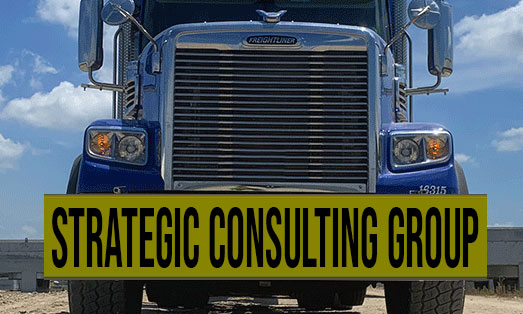Why Risk Mitigation: Identifying and addressing potential risks. in Development Projects?
Phase Execution, Risk Mitigation: Identifying and addressing potential risks., and more…
Real-life Risk Mitigation: Making It Happen
Think about these real-world situations where managing risk is key:
Building Your Dream Home:
- Contractor woes: To avoid losing your shirt, you might make sure your contractor has a bond or insurance. That way, if they go belly-up, you’re not stuck holding the bag.
Launching a New Product:
- Is anyone interested? Before you go all-in, run a test marketing campaign to see if your new product has any buzz. That way, you’re not stuck with a warehouse full of unsold widgets.
Managing Everyday Risks:
- Dodging the bullet: If a risk is seriously bad news, you might change your plans to avoid it altogether.
- Small potatoes: Sometimes a risk is just a minor annoyance, so you might decide it’s not worth the hassle to manage it.
- Sharing the burden: If the risk is big, you might share the load with someone else, like buying insurance or hiring someone to handle a specific task.
It’s all about being prepared and having options!
Want to Avoid Disasters? Learn How to Manage Risk!
TL;DR – Risk mitigation is all about figuring out what could go wrong in a project and making plans to prevent it. It helps keep things on track, saves money, and reduces stress. This article covers the basics of risk mitigation, from identifying potential problems to creating action plans.
What is Risk Mitigation?
Imagine you’re building a sandcastle on the beach. You carefully scoop and shape the sand, but suddenly a big wave crashes in, destroying your masterpiece. That wave is a risk – something that could potentially harm your project.
Risk mitigation is like building a wall around your sandcastle to protect it from the waves. It’s the process of identifying potential risks, figuring out how likely they are to happen, and then creating strategies to minimize their impact.
Why is Risk Mitigation Important?
Risk mitigation is like a superhero for your projects. It helps you:
- Stay on track: By anticipating problems, you can avoid delays and keep your project moving smoothly.
- Save money: It’s much cheaper to prevent a problem than to fix it later.
- Reduce stress: Knowing you’ve taken steps to manage risks gives you peace of mind and helps you focus on achieving your goals.
How to Master Risk Mitigation: A Step-by-Step Guide
Here’s the recipe for success:
Step 1: Risk Identification
Think about everything that could potentially go wrong. This includes:
- Financial risks: Not having enough money, losing funding, or unexpected expenses.
- Technical risks: Problems with equipment, software, or technology.
- Human risks: People getting sick, quitting, or not working well together.
- Time risks: Running out of time, delays, or unexpected changes in deadlines.
Step 2: Risk Analysis
Once you know what risks are possible, you need to figure out how likely they are to happen and how bad the consequences would be if they did.
- Probability: How likely is this risk to happen? Is it very likely, unlikely, or somewhere in between?
- Impact: If this risk happens, how bad will the consequences be? Will it cause a small inconvenience, a major delay, or a complete disaster?
Step 3: Risk Response Planning
Now it’s time to get creative! Come up with strategies to manage each risk. You might:
- Avoid the risk: If a risk is very likely and has a big impact, you might decide to change your plans to avoid it altogether.
- Reduce the risk: You could take steps to make the risk less likely to happen or lessen its impact if it does.
- Transfer the risk: You could share the risk with someone else, like buying insurance or hiring a contractor to handle a specific part of the project.
- Accept the risk: Sometimes the risk is so small or the consequences are so minor that it’s simply not worth the effort to try to manage it.
Step 4: Monitoring and Review
Once you’ve put your risk mitigation plans in place, it’s important to keep an eye on things. Regularly check to see if your strategies are working and make adjustments as needed.
Examples of Risk Mitigation in Action
Here are some real-world examples of how risk mitigation can be used:
- Building a house: To mitigate the risk of a contractor going bankrupt, you might require them to have a bond or insurance.
- Planning a school trip: To mitigate the risk of students getting lost, you could provide each student with a map and contact information for the chaperones.
- Launching a new product: To mitigate the risk of low sales, you could run a test marketing campaign to see if people are interested in the product.
Summary
Risk mitigation is a powerful tool for achieving success. By identifying potential problems, analyzing their likelihood and impact, and developing strategies to manage them, you can increase your chances of completing your projects on time, within budget, and without unnecessary stress.
Think of it like this: Being proactive about risks is like wearing a helmet when you ride a bike. It might seem like a small thing, but it can make a big difference!
More on Risk Mitigation: Identifying and addressing potential risks.…
- ## SEO Keywords: Risk Mitigation & Phase Execution
- General
- Risk mitigation
- Risk management
- Identify and address potential risks
- Risk assessment
- Risk analysis
- Risk control
- Risk response
- Risk prevention
- Mitigation strategies
- Risk management techniques
- Risk mitigation plan
- Risk mitigation process
- Risk mitigation tools
- Risk management software
- Risk management consulting
- Phase Execution
- Phase execution
- Project execution
- Project management
- Project implementation
- Execution plan
- Work breakdown structure
- Project schedule
- Project timeline
- Project deliverables
- Project resources
- Project budget
- Project scope management
- Project quality management
- Project communication management
- Project risk management
- Project stakeholder management
- Specific Risks
- Financial risk
- Operational risk
- Legal risk
- Security risk
- Environmental risk
- Reputation risk
- Project risk
- Business risk
- Technology risk
- Human resource risk
- Compliance risk
- Data security risk
- Cyber security risk
- Industries & Applications
- Risk mitigation in healthcare
- Risk mitigation in construction
- Risk mitigation in manufacturing
- Risk mitigation in finance
- Risk mitigation in IT
- Risk mitigation in software development
- Risk mitigation in cybersecurity
- Risk mitigation in supply chain management
- Risk mitigation in project management
- Long-Tail Keywords
- How to mitigate risks in [specific industry]
- Best practices for risk mitigation
- Risk mitigation tools and techniques
- Examples of risk mitigation strategies
- The importance of risk mitigation
- Risk mitigation in project management
- Risk mitigation in phase execution
- Risk mitigation for [specific risk]
- How to create a risk mitigation plan
- Risk mitigation software comparison
- Risk mitigation consulting services
- Risk mitigation training
- Risk mitigation certification
- Adding “phase execution” to keywords
- Risk mitigation during phase execution
- Managing risks in phase execution
- Phase execution risk assessment
- Phase execution risk mitigation plan
- Implementing risk mitigation strategies in phase execution
- How to mitigate risks in phase execution
- Best practices for risk mitigation in phase execution
- Tools for risk mitigation in phase execution
- Risk mitigation strategies for different phases of project execution
- Note:** This is not an exhaustive list, but it provides a good starting point for keyword research. You can use these keywords to create blog posts, articles, website content, and other marketing materials.


